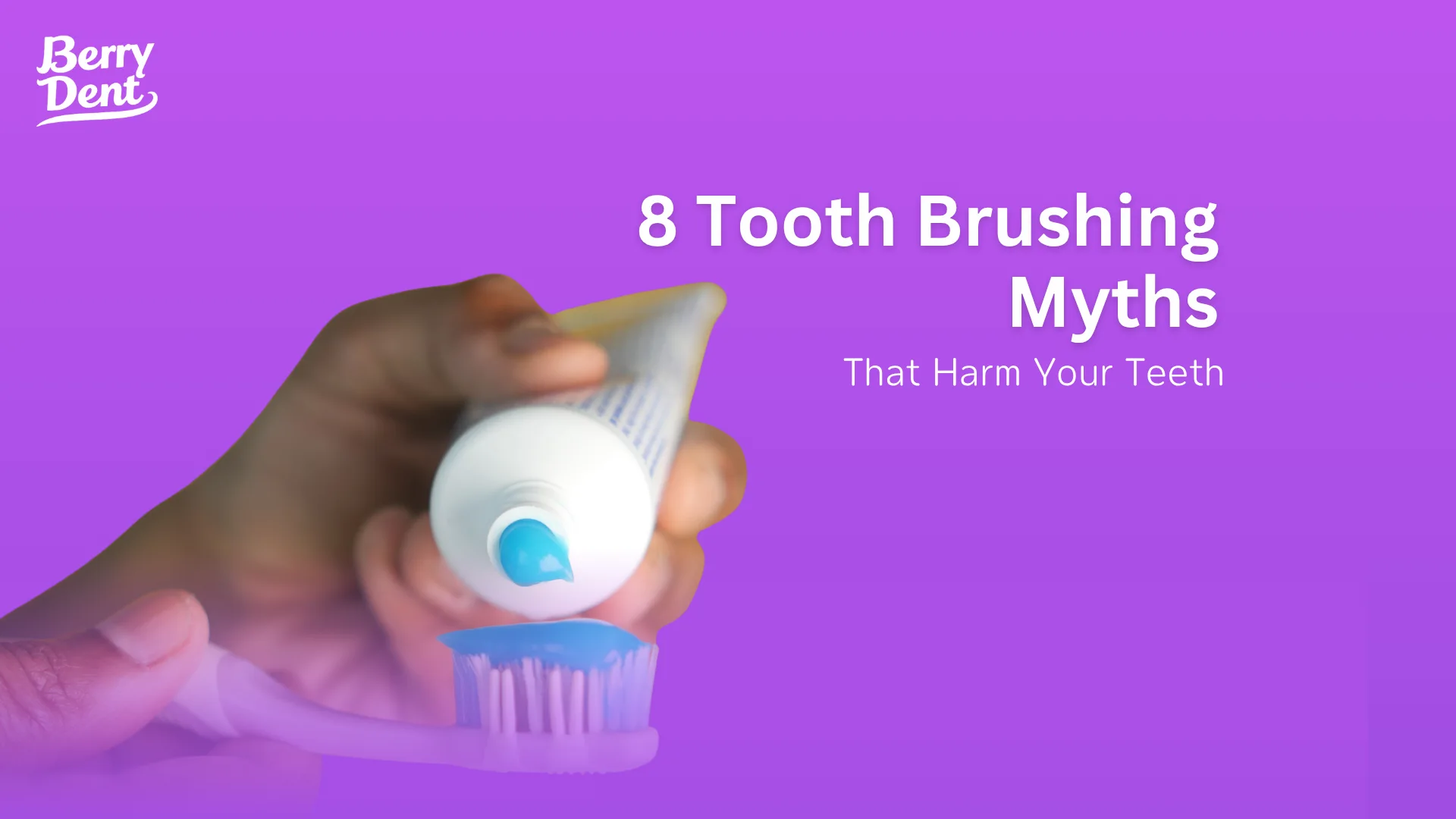How confident are you that your daily brushing is correct? We brush our teeth every day, at least twice a day, until it becomes an automatic habit. But did you know that these habits might be hiding common myths about tooth brushing that are unknowingly harming your oral health? Berry Dent is here to debunk 8 popular myths and introduce the dentist-recommended brushing method to ensure you are truly brushing correctly.
Myth 1: Brushing Harder Cleans Better
This is a top misconception. Many people think that scrubbing hard helps remove stains better.
- The Truth: Brushing too hard harms your gums and teeth.
Plaque on teeth is soft and can be removed with gentle, thorough brushing. Brushing too hard not only doesn’t clean better but also causes serious harm, leading to gum recession and tooth wear at the gumline, which causes sensitivity.
- The Correct Way: Use gentle pressure, as if you’re dusting delicate fruit. Use short strokes and flick the bristles away from the gumline.
Myth 2: You Should Brush Immediately After Eating
Brushing immediately after a meal to remove food debris seems like a good idea.
- The Truth: You should wait 30 minutes to protect your enamel.
After eating, especially acidic foods or drinks (like soda, citrus fruits), the mouth’s environment becomes acidic, temporarily softening the enamel. Brushing immediately is like scrubbing away weakened enamel.
- The Correct Way: After eating, rinse your mouth with plain water to reduce acidity, then wait at least 30-60 minutes for saliva to neutralize the mouth before brushing.
Myth 3: You Need a Lot of Toothpaste, Covering the Whole Brush
Ads often show a long, beautiful ribbon of toothpaste, making us think we need to use a lot.
- The Truth: A “pea-sized” amount is enough.
Too much toothpaste creates a lot of foam, making you feel clean and rinse too soon, preventing the fluoride from working effectively.
- The Correct Way: For adults, a pea-sized amount of toothpaste is sufficient for thorough and effective brushing.
Myth 4: Hard-Bristled Toothbrushes Clean Better
Many people like the “satisfying” feel of a hard-bristled brush, thinking it removes stains completely.
- The Truth: A soft-bristled toothbrush is best.
Like brushing hard, a hard-bristled brush can easily harm gums and enamel. Soft or medium bristles can reach the gumline and between teeth better and more gently.
- The Correct Way: Choosing a toothbrush with soft bristles, or bristles that are not too hard, to avoid harming your gums and enamel. You should also brush gently using the correct technique to ensure a thorough cleaning.
Myth 5: You Must Rinse Thoroughly with Water After Brushing
It’s a habit to rinse until all the foam is gone.
- The Truth: A little water or just spitting out the foam is enough.
Rinsing with a lot of water washes away the “fluoride,” the key ingredient for preventing cavities, from the tooth surface too quickly.
- The Correct Way: After brushing, spit out the excess foam or rinse with just a small amount of water once to allow the fluoride to remain on the tooth surface and continue working.
Myth 6: If Your Gums Bleed, You Should Stop Brushing That Area
When they see blood, many people panic and avoid brushing that area for fear of pain.
- The Truth: Bleeding is a sign of gingivitis; you need to brush more.
Bleeding while brushing is a sign that there is plaque buildup, causing inflammation. Avoiding brushing will only allow more plaque to accumulate and worsen the inflammation.
- The Correct Way: Use a soft-bristled brush and brush that area more gently and softly than usual to remove the plaque causing the problem. The bleeding will gradually improve in 1-2 weeks.
Myth 7: Brushing Alone is Enough
Thinking that brushing 2-3 times a day is sufficient for complete care.
- The Truth: Brushing only cleans about 60% of the surfaces.
A toothbrush cannot reach the tight spaces between teeth, which is where cavities are most likely to form.
- The Correct Way: You must use dental floss or an interdental brush daily to remove plaque and food debris from between your teeth.
Myth 8: Only Change Your Toothbrush When the Bristles are Frayed
Using the same toothbrush until it’s completely worn out.
- The Truth: You should replace your brush every 3-4 months.
Bristles that are starting to wear out (even if not yet frayed) are less effective at cleaning and can also harbor germs.
- The Correct Way: Replace your toothbrush every 3-4 months, or immediately after recovering from an infection like the flu.
Debunking these brushing myths and adopting the correct brushing method is the most important first step in oral care. The heart of proper brushing is choosing the right tools, especially a toothpaste that provides comprehensive care. We recommend Berry Dent, a hybrid herbal toothpaste that perfectly blends the power of science and nature. With 1500 ppm fluoride for full cavity protection, along with extracts from 5 types of berries and natural herbs that help care for healthy gums and reduce bacterial buildup, it ensures that every brushing session is the correct and most effective care for your teeth.


